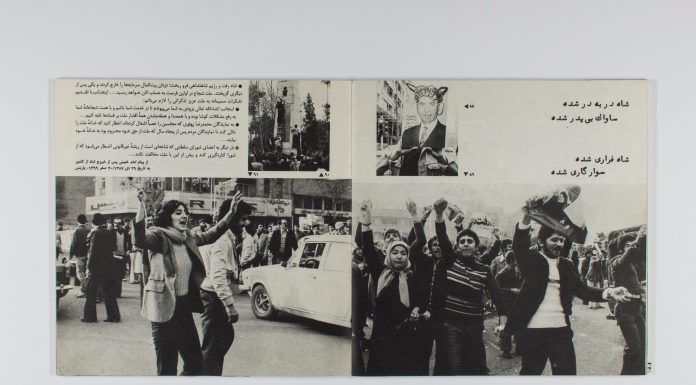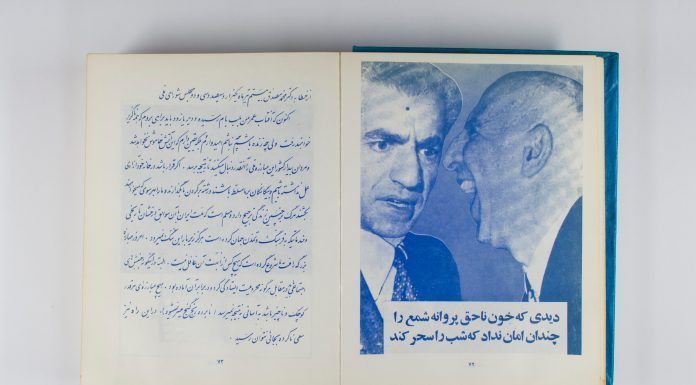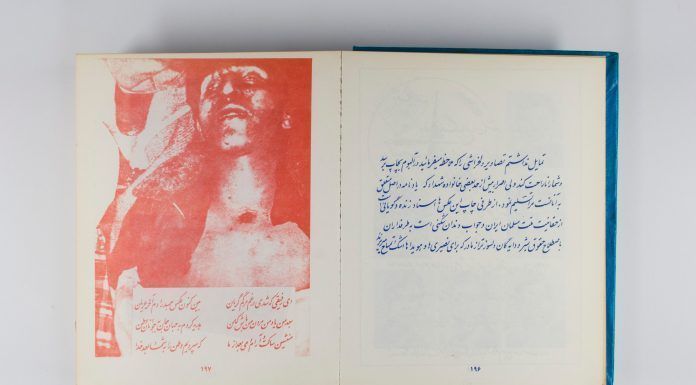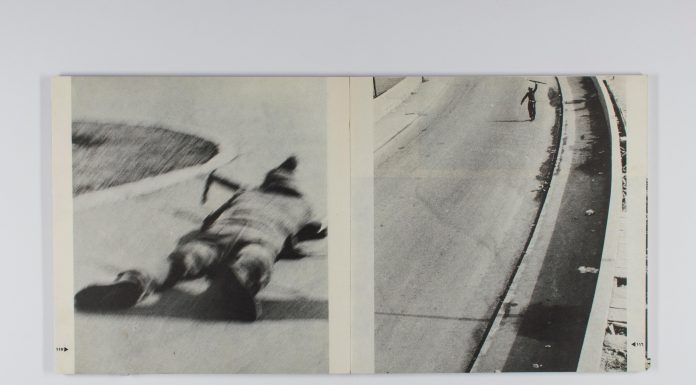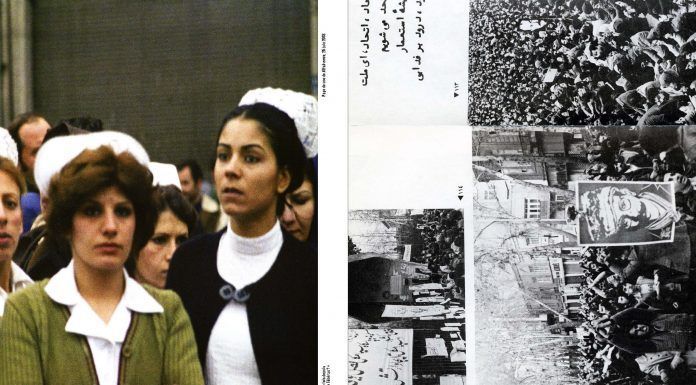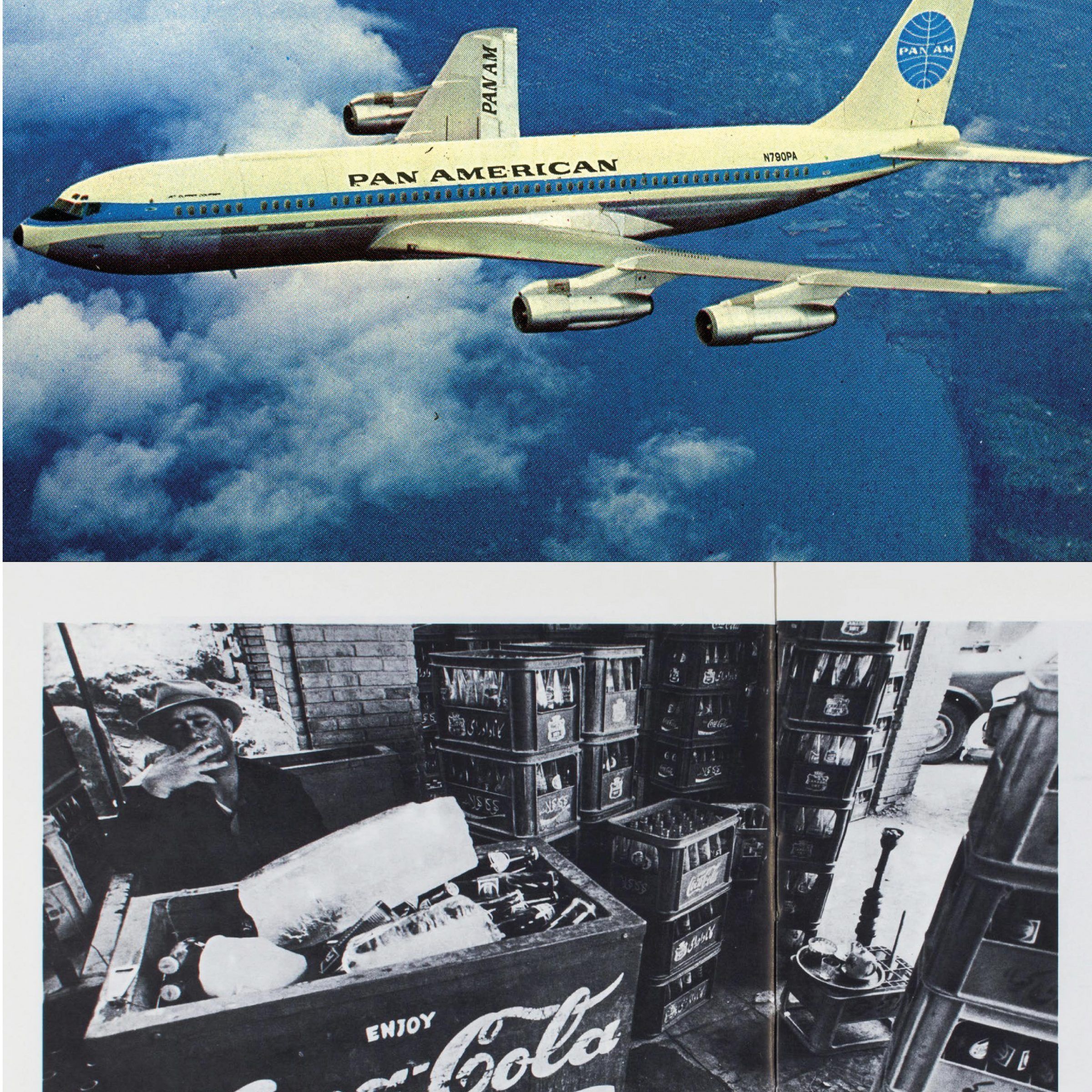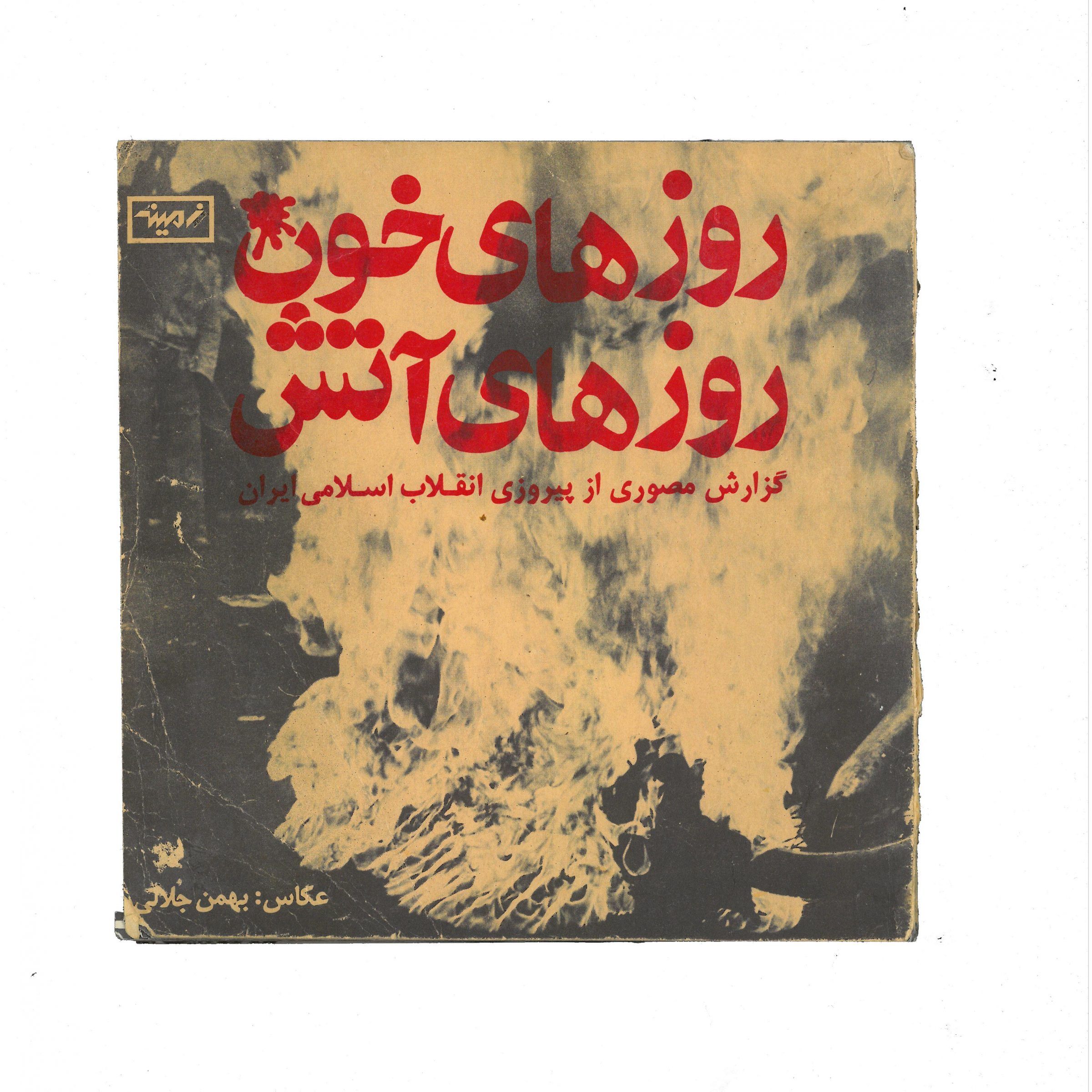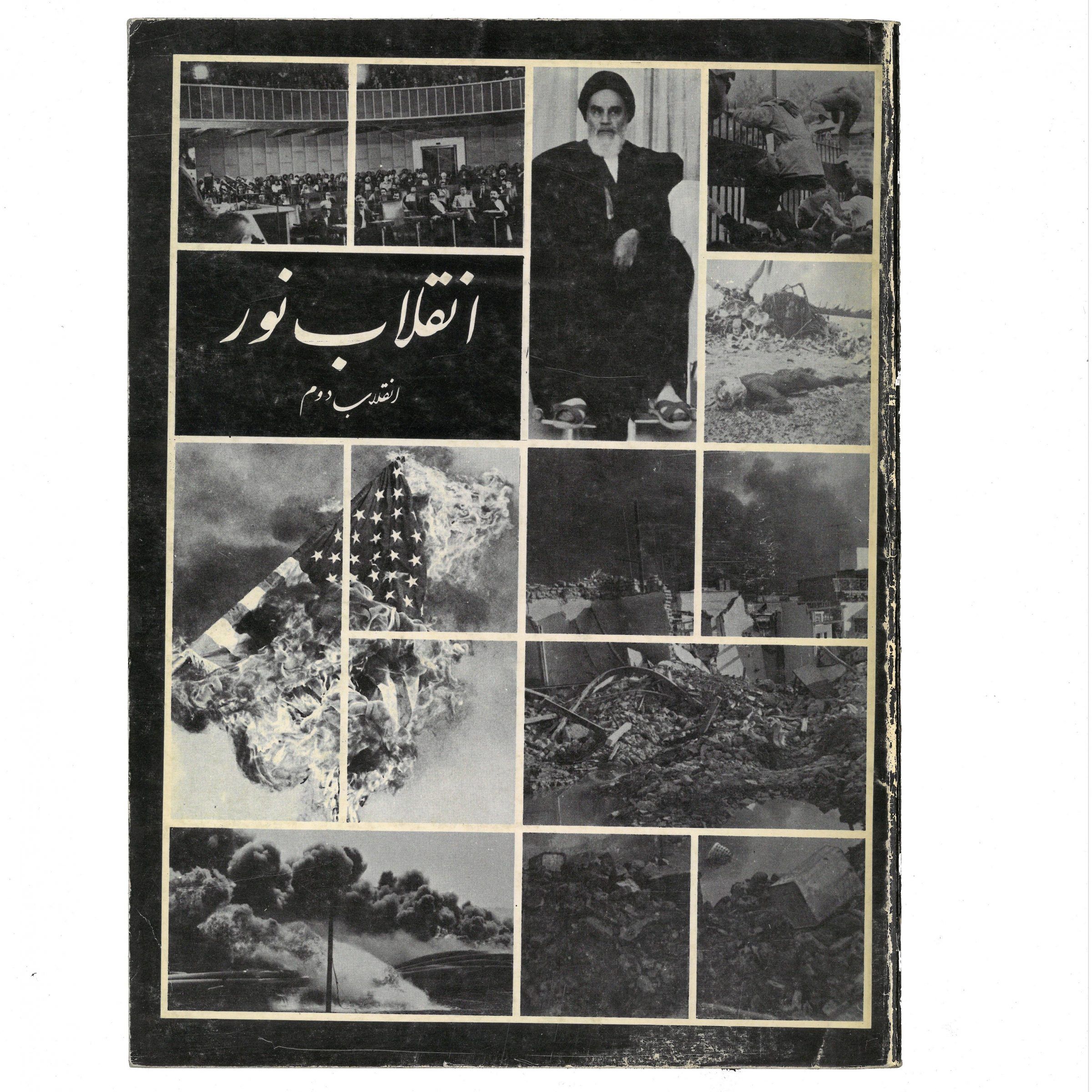Forty years ago, on January 16, 1979, the Shah of Iran and Empress Farah left Iran. It was the culmination of a series of upheavals now referred to as the Islamic Revolution.
To mark the Revolution’s 40th anniversary, an exhibition at Paris’s Le Bal — a non-profit organization — showcases the original collection of photographic and political books by the Iranian artist Hannah Darabi. The exhibition is titled “Enghelab Street: A Revolution Through Books, Iran 1979-1983.”
[aesop_image img=”https://kayhanlife.com/wp-content/uploads/2019/02/29-performingbook2-LEBAL-MS-100119-BD.jpg” panorama=”off” align=”center” lightbox=”off” captionposition=”left” revealfx=”off” overlay_revealfx=”off”]
[aesop_image img=”https://kayhanlife.com/wp-content/uploads/2019/02/24-performingbook2-LEBAL-MS-100119-BD.jpg” panorama=”off” align=”center” lightbox=”off” captionposition=”left” revealfx=”off” overlay_revealfx=”off”]
[aesop_image img=”https://kayhanlife.com/wp-content/uploads/2019/02/7-performingbook2-LEBAL-MS-100119-BD.jpg” panorama=”off” align=”center” lightbox=”off” captionposition=”left” revealfx=”off” overlay_revealfx=”off”]
[aesop_image img=”https://kayhanlife.com/wp-content/uploads/2019/02/37-performingbook2-LEBAL-MS-100119-BD.jpg” panorama=”off” align=”center” lightbox=”off” captionposition=”left” revealfx=”off” overlay_revealfx=”off”]
[aesop_image img=”https://kayhanlife.com/wp-content/uploads/2019/02/31-performingbook2-LEBAL-MS-100119-BD.jpg” panorama=”off” align=”center” lightbox=”off” captionposition=”left” revealfx=”off” overlay_revealfx=”off”]
Enghelab Street is a reference to the avenue in Tehran known for its concentration of bookstores and publishing houses. The avenue got the name Enghelab, which means ‘revolution’ in Persian, after the events of 1979.
Darabi “takes us to the heart of an intense artistic and cultural period” in Iranian history, says Le Bal, “specifically for documentary photography.”
The tumultuous transition between the end of the Shah’s regime and the establishment of the post-revolutionary Islamic state was a unique moment in contemporary Iranian history: an unprecedented period of freedom to publish and distribute books, which played a key role in the political and social environment.
Hannah Darabi is a Paris-based Iranian artist and photographer born in Tehran in 1981. She studied at Tehran’s College of Fine Arts and the University of Paris VIII-Saint Denis. Iran is the main subject of most of her photographic series, which, combined with texts, archives and objects, show the unique political and economic circumstances of her homeland.
“I was born at the time of the Iran-Iraq war in 1981,” recalls the artist in an interview published in “The Eye of Photography” magazine. “I gradually realized that I did not know anything about those years, or about historical events that we didn’t learn about [in school.]”
From the immediate aftermath of the 1979 Revolution to the mid-1980s, the country experienced an era during which freedom of speech prevailed and books were published with a vigor that would soon be tamed and coopted.
Darabi was clever enough to collect these works, some of which were subsequently banned by the regime. They ranged from the confessions of a prisoner and an open critique of the significance of Islam, to photography books such as “Days of Blood, Days of Fire,” a cult work by Bahman Jalali and Rana Javadi on the revolutionary period that was published in June 1979 and later banned by the Ministry of Culture.
Documentary photography books published during that period offer valuable insights into the motivations of a new political and aesthetic sensibility emerging in Iran. The period between 1979-1983 stands out as a prolific era in the country’s publishing history, with the unfettered creation and distribution of books.
“Enghelab Street, a Revolution Through Books, Iran 1979-1983” ends February 11 — coinciding with the 40th anniversary of the Iranian Revolution. The date will be marked by a general discussion and conferences coordinated by Chowra Makaremi, a researcher and member of France’s National Center for Scientific Research (CNRS), at Le Bal in Paris.
“Forty years ago, the 1979 revolution turned Iran into a huge political laboratory,” says Makaremi, “shaking received ideas on the meaning of revolution, and heralding the emergence of a reality that stands out in our contemporary world: political Islam.”
The purpose of the exhibition is to explore what the revolution was, she explains, but also what it never became.
Le Bal is an independent platform for exhibitions, publications, ideas and education focused on all forms of contemporary image – from photography, to video, film and new media. It was founded in 2010 with the support of the City of Paris.
Photo Credit: Le Bal

